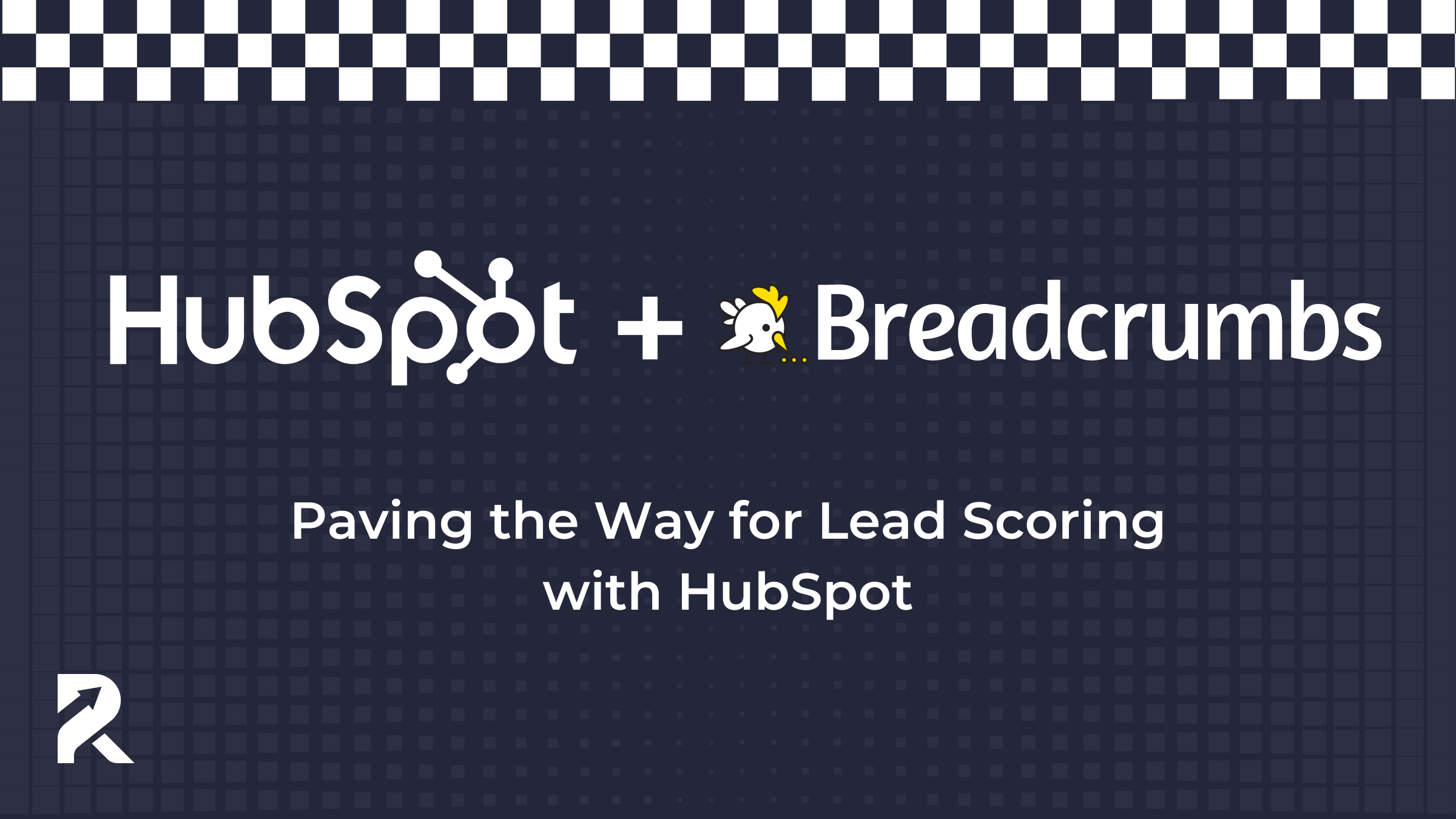
HubSpot Lead Scoring is a powerful tool that can help you scale your business by identifying and prioritizing your most promising leads. Let's take a look at the various aspects of HubSpot Lead Scoring to learn how it can not only benefit your business, but maximize your growth potential.
Introduction to HubSpot Lead Scoring
HubSpot Lead Scoring is a powerful methodology that allows you to assign values to your leads based on their engagement, behavior, and demographics. This innovative approach revolutionizes the way businesses prioritize and nurture leads, ultimately driving higher conversion rates and maximizing the return on investment.
With HubSpot Lead Scoring, you have the ability to gain deep insights into your leads and understand their level of interest and likelihood to convert into a customer. By assigning a score to each lead, you can effectively segment and prioritize your leads, ensuring that your time and resources are focused on those with the highest potential for conversion.
One of the key advantages of HubSpot Lead Scoring is its ability to streamline your sales and marketing efforts. Instead of wasting valuable time and energy on leads that may never convert, you can strategically allocate your resources and concentrate on nurturing leads that are more likely to become paying customers.
But how does HubSpot Lead Scoring work? It takes into account various factors such as engagement, behavior, and demographics to determine the value of each lead. For example, a lead who frequently visits your website, downloads your content, and interacts with your emails will receive a higher score compared to a lead who shows minimal engagement.
HubSpot Lead Scoring also considers demographic information such as job title, company size, and industry. This additional layer of data allows you to further refine your lead prioritization and tailor your marketing efforts to specific segments.
Not only does HubSpot Lead Scoring help you identify the most promising leads, but it also enables you to personalize your communication and deliver targeted content that resonates with each lead's unique needs and interests.
If you’re new to HubSpot, consider using RevPartners, the fastest tiering partner in the HubSpot ecosystem, for all your HubSpot onboarding needs!
Implementing HubSpot Lead Scoring
Implementing HubSpot Lead Scoring requires careful planning and consideration. It involves setting up criteria and defining lead properties that will be used to calculate lead scores. You need to identify the key behaviors and actions that indicate a prospect's interest and intent.
One important aspect of implementing HubSpot Lead Scoring is determining the weightage of each behavior or action. Assigning values to different actions helps in prioritizing leads based on their level of engagement. For example, a prospect who opens an email may receive a lower score than someone who downloads a whitepaper or requests a demo. By assigning different values based on the level of engagement, you can more accurately gauge a lead's quality.
It’s also crucial to consider the context in which these actions are taken. For instance, a prospect who downloads multiple whitepapers or attends a webinar might demonstrate a higher level of interest compared to someone who only performs a single action. By taking into account the frequency and variety of actions, you can gain a deeper understanding of a lead's engagement and intent.
Once you have established your lead scoring criteria, it is important to regularly review and update them as your business evolves. Market dynamics and customer preferences change over time, and your lead scoring system should adapt accordingly. By continuously refining your lead scoring system, you can ensure that it remains aligned with your changing target audience and business goals.
In addition to lead scoring, it is also beneficial to integrate other data points into your lead management process. For example, demographic information, firmographics, and past purchase history can provide valuable insights into a lead's potential value and likelihood to convert. By combining lead scoring with these additional data points, you can create a more comprehensive and accurate picture of your leads.
Another aspect to consider is lead nurturing. While lead scoring helps in identifying high-quality leads, it is equally important to nurture leads that may not yet be ready to make a purchase. By implementing lead nurturing campaigns, you can provide valuable content and resources to educate and engage leads, ultimately increasing their likelihood of conversion.
Finally, it’s important to consider the source of the lead. Different lead sources may have different levels of intent and engagement. For instance, leads that come from a direct referral or a highly targeted advertising campaign may have a higher likelihood of converting compared to leads from general website traffic. By segmenting your leads based on their source and adjusting your scoring criteria accordingly, you can ensure that you are prioritizing the most valuable leads.
Aligning Sales and Marketing through HubSpot Lead Scoring
HubSpot Lead Scoring has the potential to bridge the gap between sales and marketing teams. By assigning scores to leads based on their engagement and behavior, you can provide your sales team with valuable information about each lead's potential. This enables your sales team to prioritize their efforts and focus on leads that are most likely to convert.
Lead scoring not only provides your sales team with valuable information, but you also establish a common language between sales and marketing. With a clear understanding of what constitutes a qualified lead, both teams can work together more effectively.
Imagine this scenario: a lead with a high lead score indicates strong engagement and interest. Your sales team can then prioritize contacting this lead, knowing that they are more likely to convert. On the other hand, a lead with a low lead score may require further nurturing from the marketing team before being handed over to sales.
Additionally, lead scoring can help you identify patterns and trends in your lead generation efforts. By analyzing the data, you may discover that leads who engage with certain types of content or take specific actions are more likely to convert. Armed with this knowledge, you can optimize your marketing strategies and tailor your content to attract high-quality leads.
HubSpot Lead Scoring also allows you to set up negative scores. Negative scores can be assigned to actions that indicate a lack of interest or disqualification. For instance, if a lead unsubscribes from your emails or marks them as spam, their lead score can be decreased.
Overcoming Challenges in HubSpot Lead Scoring Implementation
While HubSpot Lead Scoring offers numerous benefits, there can be challenges in its implementation. One common challenge is determining the appropriate values and weights for different actions and behaviors. It's important to strike the right balance to ensure that your scores accurately reflect lead quality.
When it comes to determining values and weights for different actions and behaviors, it's crucial to consider the specific goals and objectives of your business. What actions or behaviors indicate a higher level of interest or engagement from a lead? Is downloading a whitepaper more valuable than attending a webinar? These are the types of questions you need to ask yourself when setting up your lead scoring system.
Additionally, it's important to regularly review and refine your lead scoring criteria. As your business evolves and your target audience changes, what may have been a valuable action or behavior in the past may no longer hold the same weight. By continuously evaluating and adjusting your lead scoring criteria, you can ensure that your scores remain accurate and relevant.
Another challenge in implementing HubSpot Lead Scoring is ensuring consistent tracking and data hygiene. Accurate data tracking is essential for effective lead scoring. If your system is not properly integrated or if you have inconsistent data, it can lead to inaccurate scores and misaligned priorities.
One way to overcome this challenge is to establish clear data tracking processes and protocols. This includes ensuring that all relevant systems and platforms are properly integrated with HubSpot, and that data is consistently and accurately captured. Regular audits of your data sources can help identify any inconsistencies or gaps in data, allowing you to take corrective actions.
Regular data cleansing and maintenance are crucial to overcome the challenge of data hygiene. This involves regularly reviewing and updating contact information, removing duplicate or outdated records, and ensuring that data is properly categorized and segmented.
Implementing a data governance strategy can also help maintain data hygiene. This includes establishing data quality standards, assigning data ownership responsibilities, and implementing data validation processes to ensure the accuracy and integrity of your lead scoring data.
Measuring Success with HubSpot Lead Scoring Metrics
To evaluate the success of your lead scoring implementation, you need to track and measure relevant metrics. HubSpot provides a variety of metrics to help you assess the impact of lead scoring on your business.
Some key metrics to consider include conversion rates, sales cycle length, and revenue generated by scored leads. By comparing these metrics before and after implementing lead scoring, you can determine the effectiveness of your strategy and make informed decisions about future optimizations.
Conversion Rates
When you really dig into how conversion rates change before and after using lead scoring, you get a clear picture of how it affects the quality of leads. When the number of good leads goes up, it often means more of them are actually making it through to becoming customers. This shows that your lead scoring is doing its job well.
Sales Cycle Length
The main aim of lead scoring is to speed up sales by finding those leads with the most potential. Keeping an eye on how quickly leads move from starting out to becoming customers gives you a good idea if lead scoring is really making this process smoother. If the time it takes gets shorter, it means the lead scoring is doing its job in making conversions happen faster.
Revenue Generated
Watching how much money the leads identified by HubSpot's scoring system bring in helps you see how it really affects how much your business makes. Comparing the cash flow before and after you started using lead scoring shows how much of the sales come from the top-scored leads. It's a solid way to measure how your lead scoring strategy affects your bottom line.
Future Trends in HubSpot Lead Scoring
As technology evolves and consumer behavior continues to change, lead scoring strategies will also need to adapt. Personalization and artificial intelligence are becoming increasingly important in lead scoring. The ability to dynamically adjust lead scores based on real-time data can greatly enhance the accuracy and effectiveness of your lead scoring efforts.
Also, as more businesses adopt HubSpot Lead Scoring, industry benchmarks and best practices will continue to evolve. Keeping up with these trends and continually refining your lead scoring strategy will be crucial to maintaining a competitive edge in the marketplace.
Summing it Up
HubSpot Lead Scoring can be a game-changer for scaling your business. By prioritizing your leads and aligning your sales and marketing efforts, you can focus on the most promising opportunities and drive revenue growth.
Want to learn more about the Hubolution ?
Come see why we think HubSpot has the best CRM in the game



